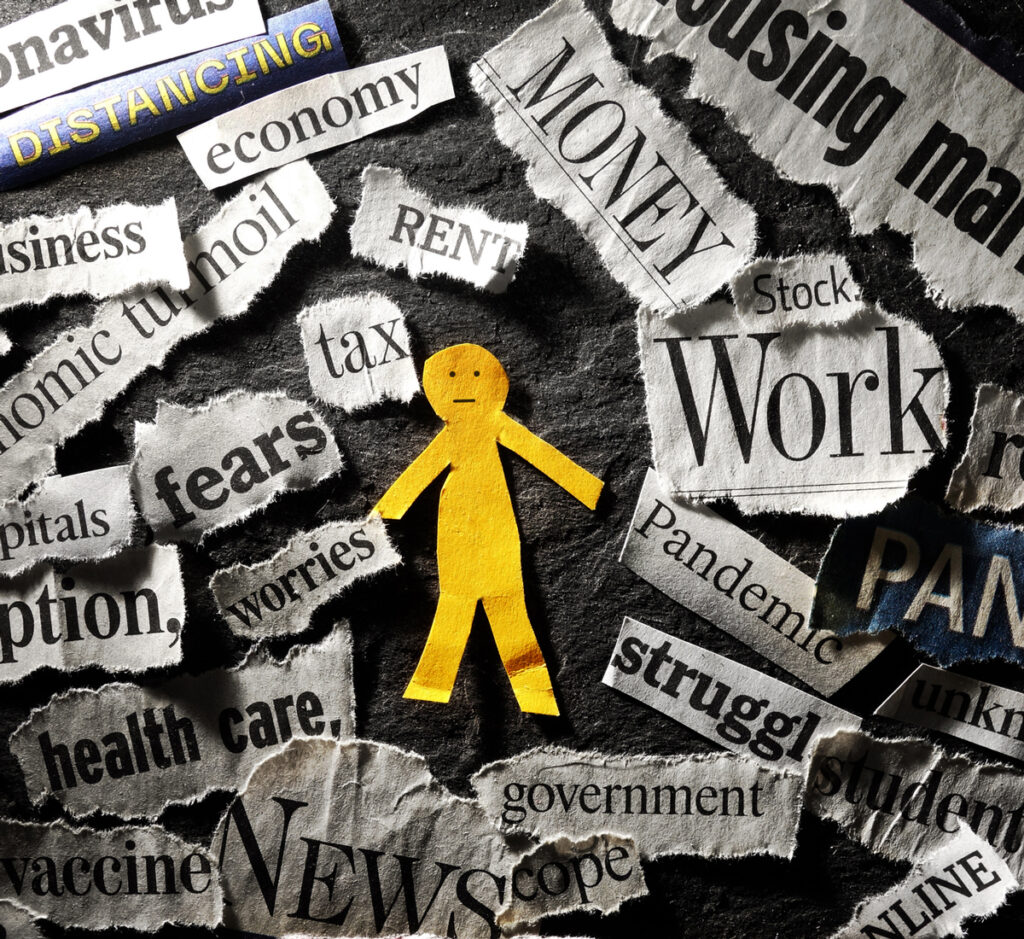How to go from anxiety to confidence as the leader of your organization : By Emmet Scott
As a clinician and practice owner, your life is filled with stress from dealing with patients and employees/associates all the way through to managing facilities, supplies and other aspects of the business – not to mention trying to balance your job with your responsibilities at home.
For many practice owners, these constant stressors can become overwhelming and lead them into the “anxiety cycle.”
Do any these thoughts seem familiar?
- You constantly feel like you’re failing (even if you have brief moments where you feel success)
- It always seems like you’re behind on your timelines
- You’re constantly measuring yourself by your peers only to come up short
- Everywhere you look, you see multiple fires that need to be put out
- You have trouble prioritizing because everything is a No. 1 priority
- You can’t stop moving forward, because if you do, you’ll never get started again
- When you’re at home, you feel guilty and lazy for not being at work. When you’re at work, you feel like you aren’t filling your responsibilities to your family.
Everyone experiences these thoughts from time to time. It’s when these thoughts and feelings are nearly constant for a period of time that they can cause long-term problems not just for your own health, but for those around you – as well as for your practice.
Over time, those thoughts form patterns which in turn become a dangerous feedback loop, throwing you into a cycle of anxiety that can prevent you from finding the root of the problem and breaking free.
For one, anxiety can be very easy to rationalize, since people with clinical anxiety can point to real, actual problems that other people can also see and agree are problems. The lie people with anxiety tell themselves is that those feelings will go away – that everything will get better once whatever the problem is either goes away or is fixed. But when that problem is fixed and those feelings are still there, they assume they were wrong before – that previous thing wasn’t the source of their anxiety, this new issue must be the real problem.
This can also be fueled by the fear that, if you stop taking on so much or reduce the amount of things on your plate now that you will become complacent and lazy and lose all of your ambition. These fears then push you to take on even more, deepening the problem.
“A lot of the anxiety cycle is fueled by ambition. Ambition can be a good thing. Ambition helped you climb the first mountain, but once you got to the top, rather than enjoying the moment, you were sizing up the next mountain. The overuse of ambition can put you in a place of consistent anxiety and feelings of failure.”
It’s very easy to mistake your anxiety for your ambition. In part, this is because that need to solve problems in order to banish those feelings of anxiety can (in the short term) create productivity which is often rewarded. All those things can make it hard to realize that you’ve fallen into the anxiety cycle and make it harder to get out of.
How anxiety will kill your business
If the only person who was directly impacted by your anxiety was you, you might entertain the notion that the potential harm to your emotional well-being was worth the tradeoff for the material rewards.
As a practice owner, ultimately everything falls under your responsibility. This is where falling into the anxiety cycle will impact your team and practice.
When you’re in the anxiety cycle, you lose the ability to prioritize problems. Everything becomes “the most important.” As a practice owner, you have a team underneath you who can help you put out all the fires. You don’t have to do everything yourself. This might seem like a relief. You can attack every problem at the same time.
But with so many projects, you won’t have time to give your team clarity on what needs to be done, or give them adequate support and resources. Regardless of how positive and uplifting you try to be, your team will eventually start to feel this pressure. You can try to tell yourself that having so many irons in the fire means you’re moving forward, when in reality, you’ve created failure and burnout within the organization because you were unable to prioritize your business’s problems and needs.
Breaking the cycle
So what can you do about it? Can you even fix a problem for which attempting to solve the problem is, in itself, a symptom of the problem?
Yes, you can. Moving into the “confidence cycle” is going to require you to re-frame your thinking.
In the anxiety cycle, you create too many projects than can ever be done with quality. You look around and see all the little fires that need to get put out before they get out of control. So everything becomes a fire drill. Anxiety lies in constantly living in the future of what is not yet done.
“As a practice owner, ultimately everything falls under your responsibility. This is where falling into the anxiety cycle will impact your team and practice.”
Confidence lives in looking to the past where all the challenges have been overcome. Look to your past and present to find confidence. Seeing the strengths you are currently standing on can make all the difference. Seeing yourself as already winning changes the paradigm dramatically.
It’s painful to be an out of shape loser who’s trying to find some time to work out. Its inspiring to be an athlete who needs to get back in shape. Perspective is powerful to being in the confidence cycle.
It’s also important to realize that getting one thing done well is better than starting a bunch of things that get low quality solutions or projects that go unfinished. To get out of the anxiety cycle, you must have the courage to let some fires burn.
Because what the anxiety cycle does, ultimately, is take away your ability to see things wholistically. This means that every new problem seems to exist in a vacuum. You don’t have the ability to couch this new problem relative to your previous successes (and failures!), or even to see your myriad problems relative to each other. You can’t prioritize.
What’s worse is that you don’t have the ability to take lessons learned from past wins and losses and apply those to the problem in front of you – you wind up trying to re-invent the wheel every single time.
Being in the confidence cycle means not chasing every problem nor seeing yourself as behind. In the confidence cycle, you still see all the issues and problems, but you see them with increased clarity – you see where everything fits into the bigger picture.
When you realize that succeeding in the past didn’t make you immune to new problems, it becomes a lot easier to believe that failing in the future won’t keep you from getting back up and moving forward.
The truth is a lot of the anxiety cycle is fueled by ambition. Ambition can be a good thing. Ambition helped you climb the first mountain, but once you got to the top, rather than enjoying the moment, you were sizing up the next mountain. The overuse of ambition can put you in a place of consistent anxiety and feelings of failure. This can affect not only you, but your team, who may not feel that success is ever attainable based on that ambition.
So how do you get out of this cycle? It starts by looking back as often as possible. Pause and reflect on where you were, what you’ve overcome, and what you’ve achieved. Think about the mountain you’ve just climbed, and what it was like during the climb. You can do that at any point of the climb. Celebrate the progress, not perfection. Appreciate what you’re doing.
We’re almost always our worst critics. There are no success police. This is all a figment of our imagination when it comes to defining the rules of game. So why not create a game where you’re always winning?
“Hey, look at what we’ve done so far. Look how far we’ve come.”
With that kind of outlook, you can’t lose.
To listen to the complete podcast, visit https://dsosecrets.libsyn.com and download episode No. 53.
Anxiety: More than just everyday worries
BY ALAN CHERRY, EDITOR, DENTALFACTS
Often, stepping back, taking a breath and reframing your approach is all it takes to break the anxiety cycle. After all, experiencing occasional anxiety is a normal part of life. It comes and goes. It is tied to an event or a person or something finite and well defined. Once the crisis passes or the stressor is removed the anxiety goes away as well.
But that isn’t always the case. Mental health is a large, under-addressed issue in our country and within the dental profession specifically. For some people, the anxiety cycle isn’t something that can be escaped by reframing their thinking and doing all of the right things.
Chronic anxiety – an officially recognized mental health illness with five subcategories. It’s far more common than you might expect and, like any illness, has a wide range of severity from PTSD on one end to generalized anxiety disorder on the other.
People with generalized anxiety disorder frequently have intense, excessive and persistent worry and fear about everyday situations. These feelings of anxiety interfere with daily activities, are difficult to control, and are out of proportion to the actual danger and can last a long time.
It is very important to make this distinction, because people have a tendency to disregard the signs and symptoms of clinical anxiety (in themselves and others), in part due to the fact that it’s often hard to distinguish between clinical anxiety and simply “being anxious.”
The good news is that there’s a way you can beat anxiety, and that it is only one sentence long. The bad news is that the answer will probably make you as frustrated as it makes dental patients who ask, “How do I fix and prevent getting cavities?”
“Seek care from a qualified medical professional.”





